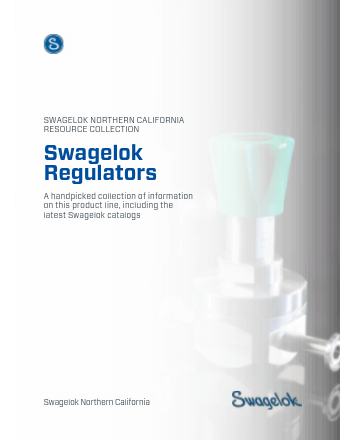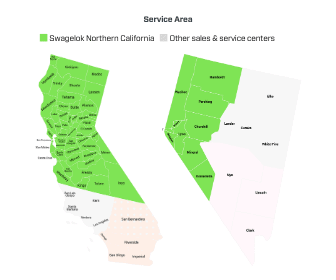Video: Another Way To Deal With The Supply Pressure Effect
by Jeff Hopkins, on 5/15/19 8:45 AM
Two-stage reduction does the trick, and can be done in two different ways
"For lower flow applications an alternative method of regulating supply pressure effect is to use two-stage pressure reduction. "
- From Swagelok's Managing a Regulators Supply Pressure Effect (SPE), Part 2 (Video)
In an earlier post, we looked at an odd phenomenon called the Supply Pressure Effect. When a supply cylinder is running low on gas, the supply pressure will fall. As it does, you'll see a rise in the outlet pressure from a pressure-reducing regulator. Likewise, if the inlet pressure increases, the outlet pressure will decrease.
As we explained before, the falling pressure from the cylinder isn't providing enough force for the internal elements of the spring loaded pressure reducing regulator to do their job as efficiently. We also explained how a model with a balanced poppet design will yield better results.
Another approach
But there's more than one way to approach the problem. For lower flow applications, another alternative to keeping SPE in check is two-stage pressure reduction. You can do that by putting two one-stage regulators in series, or using a two-stage regulator in a single assembly. The first stage regulator controls the inlet pressure variation to some degree, and the second one smooths it out even further. Together they keep the outlet pressure very close to the target.
Remember, manufacturers typically provide an SPE chart showing the effect at various flow coefficients, expressed as a percentage or as a ratio. So a regulator with an SPE of 1 percent will see the outlet pressure rise 20 psig when the inlet pressure drops 2000 psig.
When you use two-stage reduction, just multiply the two SPE ratings to see what effect the combination will have. So if each regulator has a 1 percent SPE, the combination will keep the total change to only 0.01 percent of the initial pressure change.
Watch the short video below to see how this works.
Placement
You might have an application where one cylinder supplies multiple operations, each with its own pressure requirements. To achieve two-stage regulation in such a setup, put the first single-stage regulator near the gas source, then put another single-stage regulator on each of the process lines.
Don't make the costly mistake of putting a two-stage regulator near the gas supply. That would create the effect of three-stage regulation.
Now that you've watched the videos, here's your chance to talk with a Swagelok Northern California expert. Contact him through our regulator consultation page, and he'll walk you through your choices for keeping SPE under control.
More like this:



/Digital%20montage%20(1).jpg?width=1920&name=Digital%20montage%20(1).jpg)


